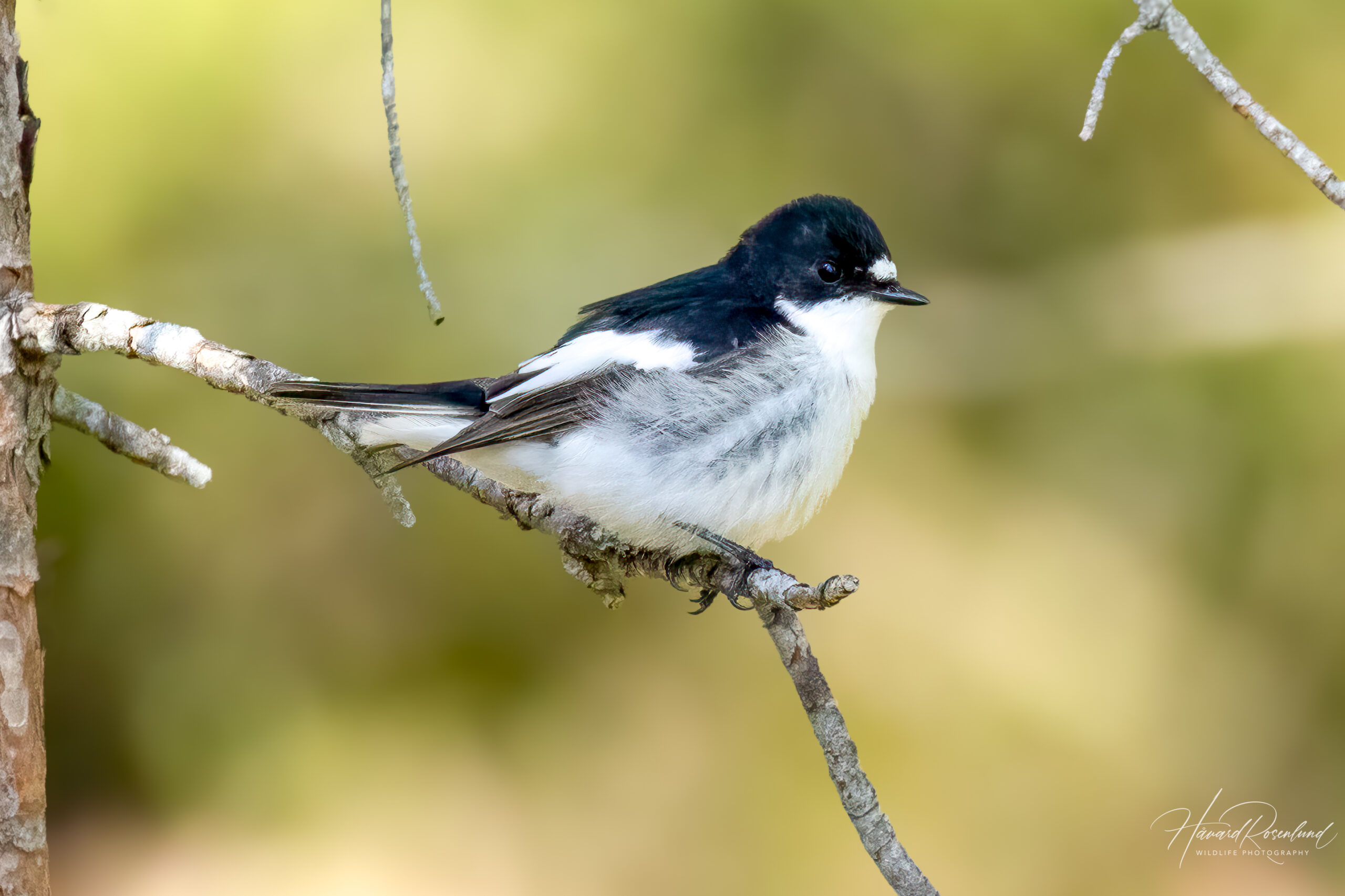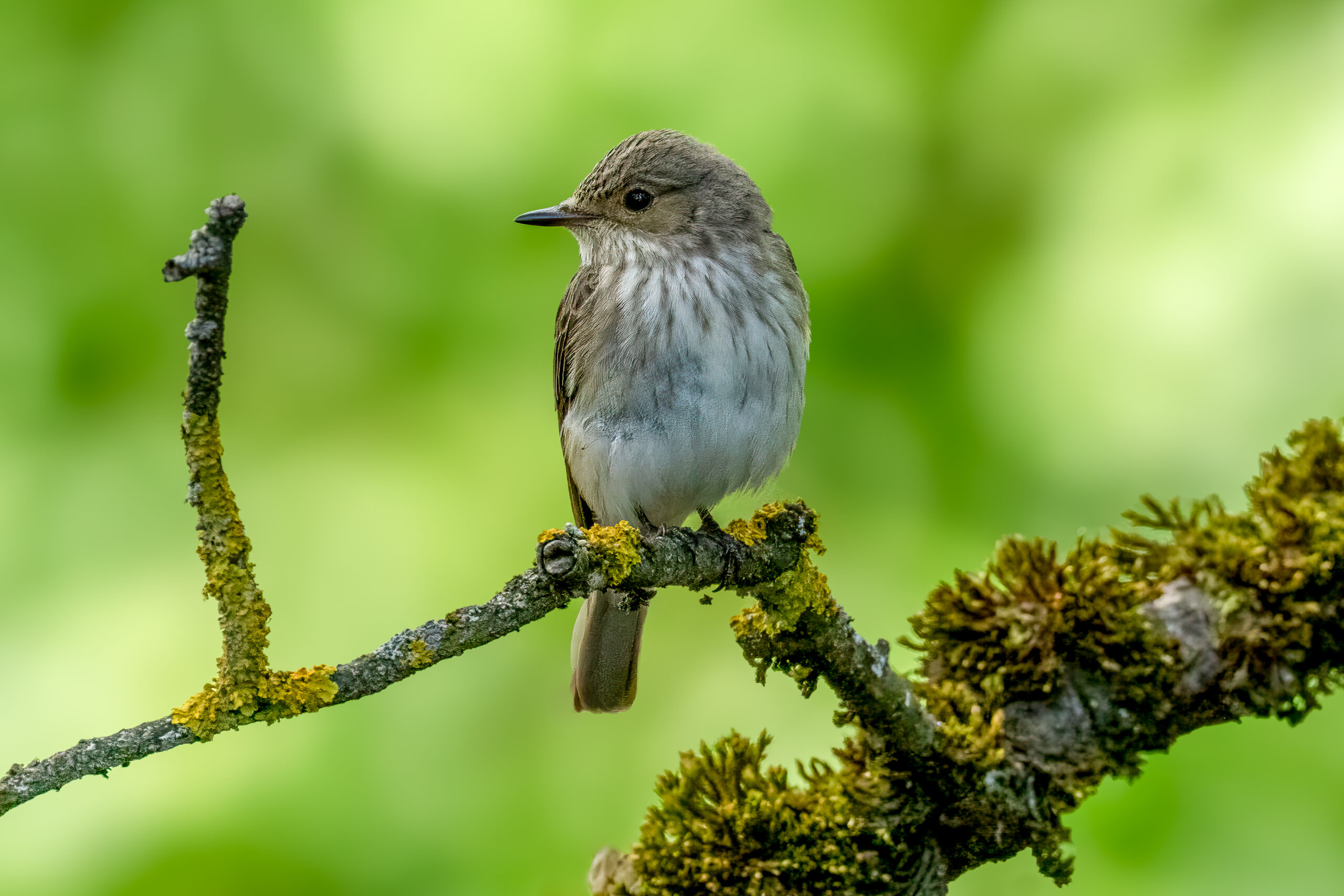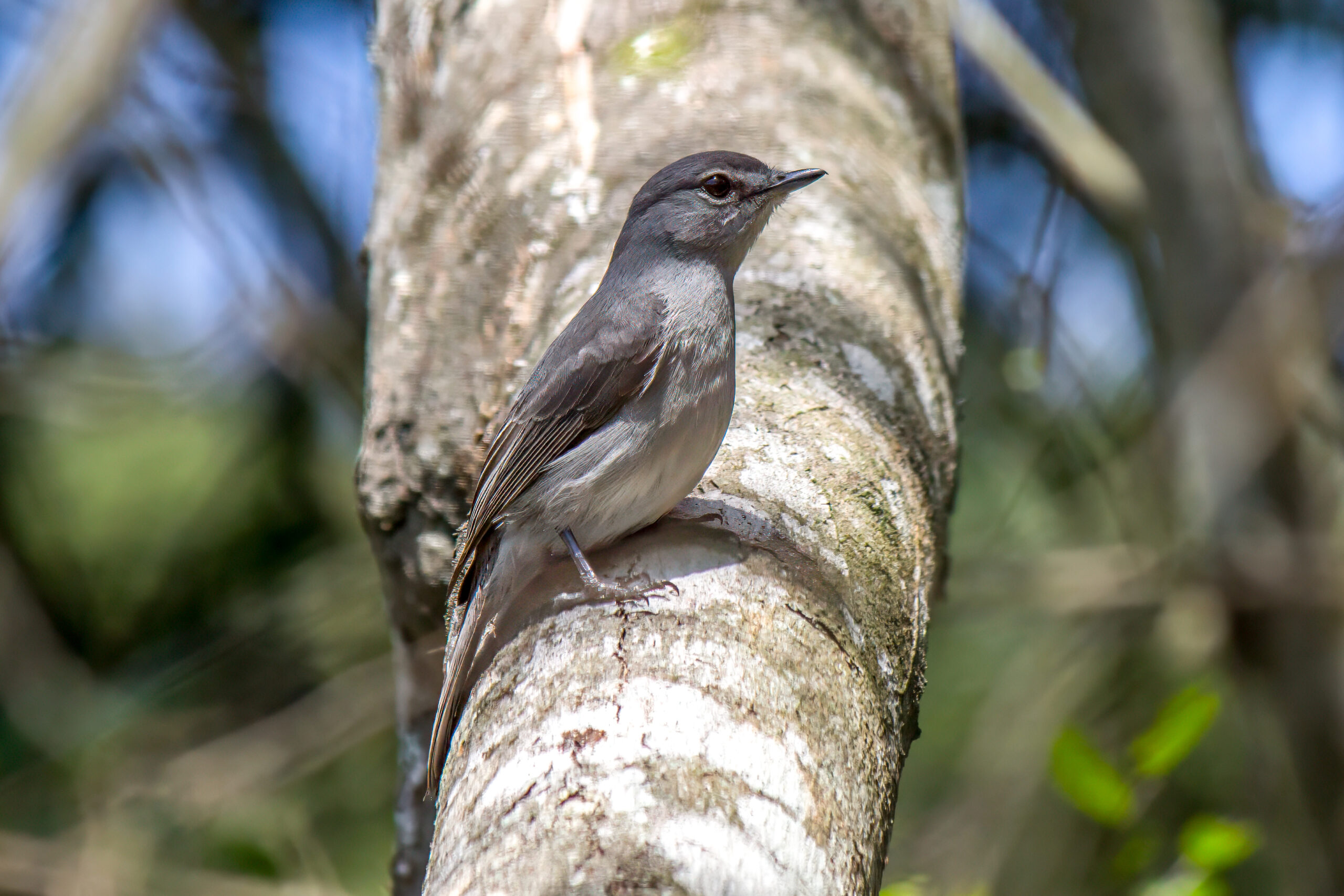European Pied Flycatcher
(Ficedula hypoleuca)
Description
The European pied flycatcher (Ficedula hypoleuca) is a small passerine bird native to Europe and western Asia. It measures approximately 12–13.5 cm (4.7-5.3 in) in length with a wingspan of 21–24 cm (8.3-9.4 in). The male is easily recognizable during the breeding season by its striking black and white plumage, featuring a black head, back, and wings with a contrasting white underbelly, white wing patches, and a distinctive white patch on the forehead. Females, non-breeding males, and juveniles are more subdued in color, displaying brownish-grey plumage with lighter underparts.
This species can be confused with the collared flycatcher (Ficedula albicollis), but the pied flycatcher can be distinguished by the absence of a white collar. The very similar Atlas flycatcher (Ficedula speculigera) was previously considered a subspecies of the European pied flycatcher but has since been recognized as a separate species. The Atlas flycatcher is found in northwestern Africa and displays a more prominent white forehead patch and a slightly different song.
Diet & habitat
The European pied flycatcher inhabits deciduous and mixed woodlands, often favoring areas with mature oak trees. It can also be found in parks, gardens, and forest edges. This bird primarily feeds on insects, including beetles, flies, and caterpillars, which it catches mid-air with agile, acrobatic flight. It occasionally consumes berries and other fruits, especially outside the breeding season.
Migration
The European pied flycatcher is a long-distance migratory bird, traveling from its breeding grounds in Europe and Asia to wintering areas in Western and Central Africa. Migration occurs twice a year, with birds leaving their nesting areas in late summer to early autumn (August to October) and returning in spring (April to May). During migration, they cover thousands of kilometers, often stopping at key sites along the way to rest and refuel.
Nesting
Breeding season for the European pied flycatcher begins in late April or early May. Males arrive at the breeding grounds first to establish territories and attract females with their songs and displays. The species is known for its preference for nesting in tree cavities, but it readily accepts nest boxes provided by conservationists and bird enthusiasts. Females lay a clutch of 5–7 eggs, which are incubated for about 12–14 days. Both parents participate in feeding the chicks, which fledge approximately 14–16 days after hatching. The chicks remain dependent on their parents for a short period after fledging, learning to forage and navigate their surroundings.
Studies have shown that male pied flycatchers can exhibit polygynous behavior, sometimes maintaining more than one nest with different females. The male rarely has more than two females, who typically nest in separate territories, sometimes quite far a part. After successfully breeding with a second female, the male returns to the first female and stay with her until the chicks are fledged. If the two females are close, it may tend to both broods.
Status
The European pied flycatcher is currently listed as least concern by the IUCN Red List, due to its wide distribution and stable population numbers. However, local populations may face threats from habitat loss, climate change, and competition for nesting sites with other cavity-nesting species. Conservation efforts, such as providing nest boxes and protecting key habitats, play a crucial role in supporting their populations.







